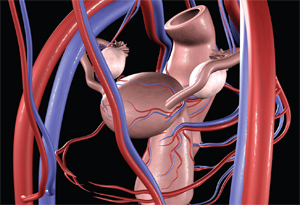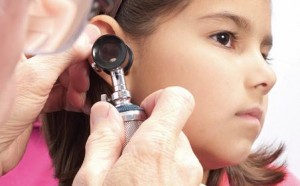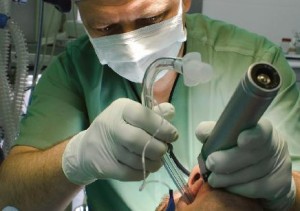 Neurophobia
Neurophobia
Neurophobia has probably afflicted you at some stage during your medical school training, whether figuring out how to correlate signs elicited from examination with a likely diagnosis, or deciphering which tract has decussated at a particular level in the neuroaxis. The disease definition of neurophobia as the ‘fear of neural sciences and clinical neurology’ is a testament to its influence; affecting up to 50% of students and junior doctors at least once in their lifetime. [1] The severity of the condition ranges from simple dislike or avoidance of neurology to sub-par clinical assessment of patients with a neurological complaint. Neurophobia is often compounded by a crippling lack of confi dence in approaching and understanding basic neurological concepts.
According to the World Health Organisation, neurological conditions contribute to about 6.3% of the global health burden and account for as much as twelve percent of global mortality. [2] Given these figures, neurophobia persisting into postgraduate medical years may adversely infl uence the treatment that the significant proportion of patients who present with neurological complaints receive. This article will explore why neurophobia exists and some strategies in remedying it from both a student and teaching perspective.
Perceptions of neurology
One factor contributing to the existence of neurophobia is the perception of neurology within the medical community. The classic stereotype, so vividly depicted by the editor of the British Medical Journal: ‘the neurologist is one of the great archetypes: a brilliant, forgetful man with a bulging cranium….who….talks with ease about bits of the brain you’d forgotten existed, adores diagnosis and rare syndromes, and – most importantly – never bothers about treatment.’ [3] The description by Talley and O’ Connor is that of the neurologist being identified by the presence of hatpins in their expensive suits; and how they use the keys of an expensive motor car to elicit plantar reflexes further solidifies the mythology of the neurologist as a stereotype for another generation of Australian medical students. [4] Some have even proposed that neurologists thrive in a specialty known for its intellectual pursuits and exclusivity – a specialty where ‘only young Einsteins need apply.’ [5] Unfortunately, these stereotypes may only serve to perpetuate the reputation of neurology as a difficult specialty, which is complex and full of rare diagnoses (Figure 1).
However, everyone knows that stereotypes are almost always inaccurate. An important question is what do students really think about neurology? There have been several questionnaires asking this question to medical students across various countries and the results are strikingly similar in theme. Neurology is considered by students as the most difficult of the internal medicine specialities. Not surprisingly, it was also the specialty perceived by medical students as the one they had the least knowledge about and, understandably, were least confident in. [5-10] Yet such sentiments are also shared amongst residents, junior doctors and general practitioners in the United Kingdom (UK) and United States (US). [8-10] The persistence of this phenomenon after medical school is supported by the number of intriguing and difficult case reports published in the prestigious Lancet journal. Neurological cases (26%) appear at more than double the frequency of the next highest specialty, gastroenterology, (12%) as a proportion of total case reports in the Lancet from 2003 to 2008. [11] However, this finding may also be explained by the fact that in one survey, neurology was ranked as the most interesting of specialities by medical students, especially after they had completed a rotation within the specialty. [10] So whilst neurophobia exists, it is not outlandish to claim that many medical students do at least find neurology very interesting and would therefore actively seek to improve their understanding and knowledge.
The perception of neurological disease amongst students and the wider community can also be biased. Films such as The Diving Bell and the Butterfly (2007), which is about locked-in syndrome, are not only a compelling account of a peculiar neurological disease, capturing the imagination of the public, but they also highlights the absence of effective treatment following established cerebral infarction. Definitive cures for progressive illnesses, including multiple sclerosis and motor neuron disease are also yet to be discovered, but the reality is that there are numerous effective treatments for a variety of neurological complaints and diseases. Some students will thus incorrectly perceive that the joy gained from neurology only comes from the challenge of arriving at a diagnosis rather than from providing useful treatment to patients.
Other causes of neurophobia
Apart from the perception of neurology, a number of other reasons for students’ neurophobia and the perceived difficulty of neurology have been identified. [5-10] Contributory factors to neurophobia can be divided into pre-clinical and clinical exposure factors. Preclinical factors include inadequate teaching in the pre-clinical years, insufficient knowledge of basic neuroanatomy and neuroscience, as well as difficulty in correlating the biomedical sciences with neurological cases (especially localising lesions). Clinical exposure factors include the length of the neurology examination, a perception of complex diagnoses stemming from inpatients being a biased sample of neurology patients, limited exposure to neurology and a paucity of bedside teaching.
Preventing neurophobia – student and teacher perspective
It is clearly much better to prevent neurophobia from occurring than to attempt to remedy it once it has become ingrained. Addressing pre-clinical exposure factors can prevent its development early during medical school. Media reports have quoted doctors and students bemoaning the lack of anatomy teaching contact hours in Australian medical courses. [12, 13] Common sense dictates that the earlier and more frequent the exposure that students have with basic neurology in their medical programs (for example, in the form of introductory sessions on the brain, spinal cord and cranial nerves that are reinforced later down the track), the greater the chance of preventing neurophobia in their clinical years. It goes without saying that a fundamental understanding of neuroanatomy is essential to localising lesions in neurology. Clinically-relevant neurosciences should likewise receive emphasis in pre-clinical teaching.
Many neurology educators concur with students’ wishes for the teaching of basic science and clinical neurology to be effectively integrated . [14, 15] This needs to be a priority. The problem or case based learning model adopted by many undergraduate programs should easily accommodate this integration, using carefully selected cases that can be reinforced with continual assessments via written or observed clinical exams. [15] Neuroanatomy can be a complex science to comprehend. Therefore, more clinically-appropriate and student offerocused rules or tricks should be taught to simplify the concepts. The ‘rule of fours’ for brainstem vascular syndromes is one delightful example of such a rule. [16] This example of a teaching ‘rule’ would be more useful for students than memorising anatomical mnemonics, which favour rote learning over developing a deeper understanding of anatomical concepts. Given the reliance on more and more sophisticated neuroimaging in clinical neurology, correlating clinical neuroimaging with the relevant anatomical concepts must also be included in the pre-clinical years.
During the clinical years, medical students ideally want more frequent and improved bedside teaching in smaller tutorial groups. The feasibility of smaller groups is beyond the scope of my article but I will emphasise one style of bedside teaching that is most conducive to learning neurology. Bedside teaching allows the student to carry out important components of a clinical task under supervision, test their understanding during a clinical discussion and then reflect on possible areas of improvement during a debrief afterwards. This century-old style of bedside teaching, which has more recently been characterised in educational theory as the application of an experiential learning cycle (ELC) framework, works for students and as it did for their teachers when they themselves were students of neurology. [17, 18] The essential questions for a clinical teacher to ask during bedside tutorials are ‘why?’ and ‘so what?’ These inquiries will gauge students’ deeper understanding of the interactions between an illness and its neuro-anatomical correlations, rather than simply testing recall of isolated medical facts. [19]
There is also the issue of the inpatient population within the neurology ward. The overwhelming majority of patients are people who have experienced a stroke and, in large tertiary teaching hospitals, there will also be several patients with rare diagnoses and syndromes. This selection of patients is unrepresentative of the broad nature of neurological presentations and especially excludes patients whose conditions are non-acute and who are referred to outpatients’ clinics. Students are sometimes deterred by patients with rare syndromes that would not even be worth mentioning during a differential diagnosis list in an objective structured clinical examination. Therefore, more exposure to outpatient clinics would assist students to develop skills in recognising common neurological presentations. The learning and teaching of neurology at outpatients should, like bedside tutorials, follow the ELC model. [18] Outpatient clinics should be made mandatory within neurology rotations and rather than making students passive observers, as is commonplace, students should be required to see the patient beforehand (especially if the patient is a patient known to the neurologist with signs or important learning points that can be garnered in their history). A separate clinic room for the student is necessary for this approach, with the neurologist then coming in after a period of time, allowing the student to present their findings followed by an interactive discussion of relevant concepts. Next, the consultant can conduct the consultation with the student observing. Following feedback, the student can think about what can be improved and plan the next consultation, as described in the ELC model (Figure 2). Time constraints make teaching difficult in outpatient settings. However, with this approach, when the student is seeing the known patient by themselves, the consultant can see other (less interesting) patients in the clinic so in essence no time (apart from the teaching time) is lost. This inevitably means the student may miss seeing every second patient that comes to the clinic but in this case, sacrificing quantity for quality of learning may be more beneficial in combating neurophobia long term.
Neurology associations have developed curricula in the US and UK as a “must-know” guideline for students and residents. [20, 21] The major benefits of these endeavours are to set a minimum standard across medical schools and provide clear objectives to which students can aspire. This helps develop recognition of common neurological presentations and the acquisition of essential clinical skills. It is for this reason that the development of a uniform neurology curriculum adopted through all medical school programs across Australia may also alleviate neurophobia.
The responsibility to engage or seek learning opportunities in neurology, to combat neurophobia, nevertheless lies with the students. Students’ own motivation is vital in seeking improvement. It is often hardest to motivate students who find neurology boring and thus fail to engage with the subject. Nevertheless, interest often picks up once students feel more competent in the area. To help improve knowledge and skills in neurology, students can now use a variety of resources apart from textbooks and journals to complement their clinical neurology exposure. One growing trend in the US is the use of online learning and resources for neurology. A variety of online resources supplementing bedside learning and didactic teaching (e.g. lectures) is beneficial to students because of the active learning process they promote. This involves integrating the acquisition of information, placing it in context and then using it practically in patient encounters. [9] Therefore, medical schools should experiment with novel resources and teaching techniques that students will find useful – ‘virtual neurological patients’, video tutorials and neuroanatomy teaching computer programmes are all potential modern teaching tools. This new format of electronic teaching is one way to engage students who otherwise are uninterested in neurology. In conclusion, recognising the early signs of neurophobia is important for medical students and teachers alike. Once it is diagnosed, it is the responsibility of both student and teacher to minimise the burden of disease.
Acknowledgements
The author would like to thank May Wong for editing and providing helpful suggestions for an earlier draftof the article.
Conflicts of interest
None declared.
Correspondence
B Nham: benjaminsb.nham@gmail.com










